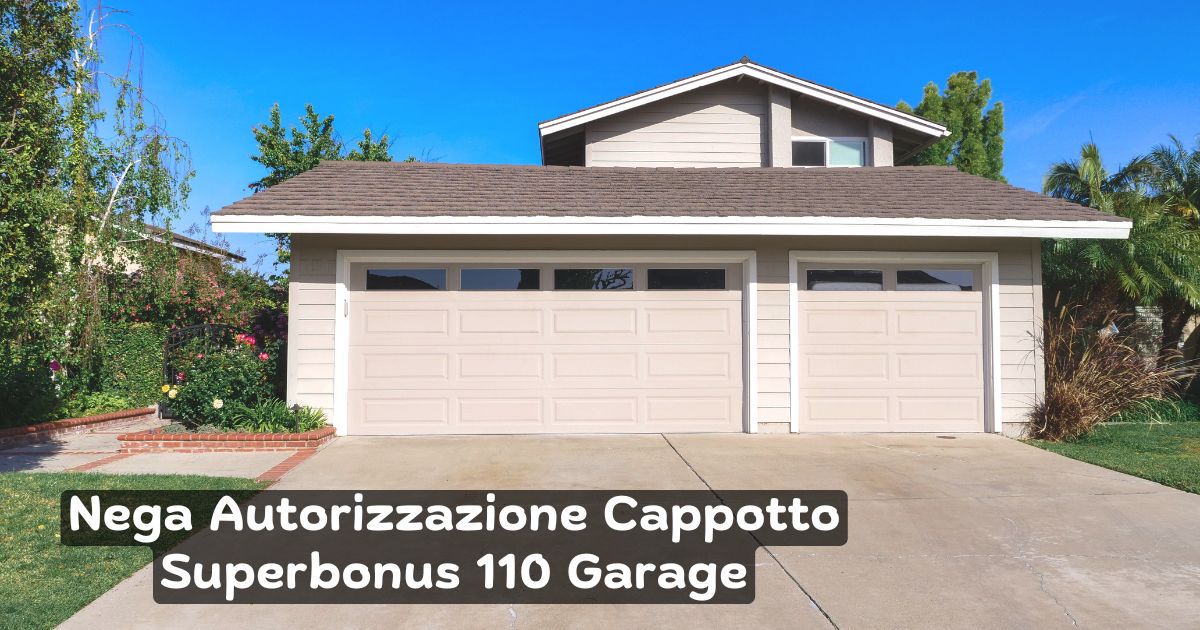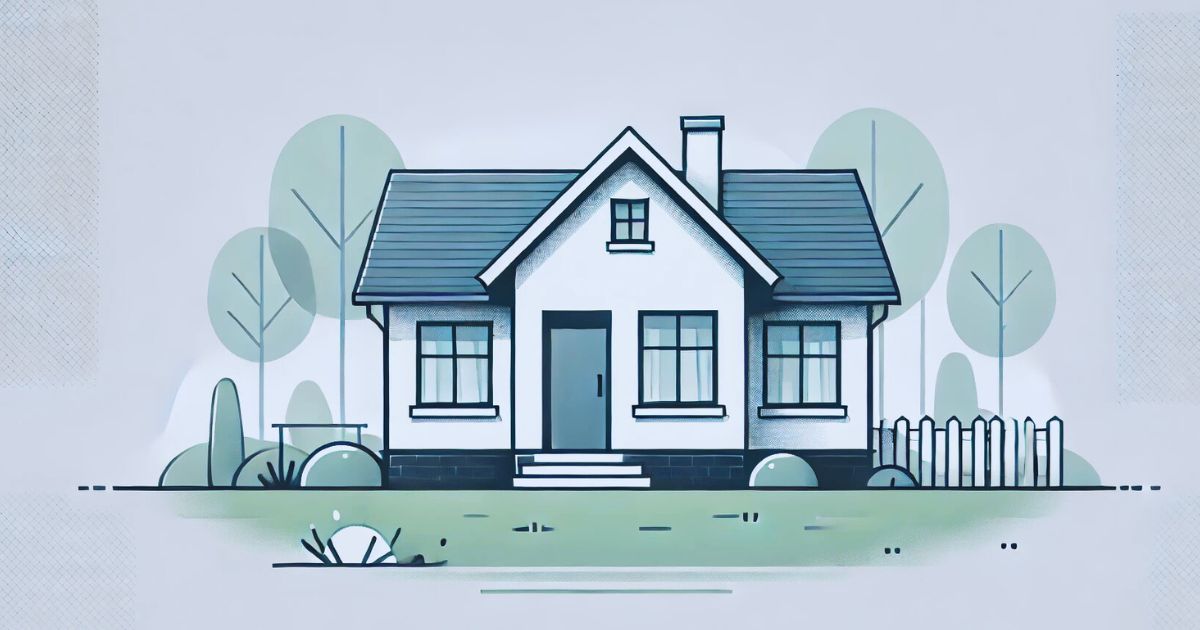The Italian government has introduced the Superbonus 110%. This ambitious initiative aims to enhance energy efficiency in residential buildings. By offering a tax deduction of 110% on specific renovations, the program encourages homeowners to invest in energy-saving measures. One key component is cappotto termico, or thermal insulation. It plays a crucial role in reducing energy consumption. However, applying this incentive to garages can be complex. Homeowners must understand the implications of nega autorizzazione, or denial of authorization. This article delves into the intricacies of nega autorizzazione cappotto superbonus 110 garage. It equips homeowners with the knowledge to navigate the process effectively.
Understanding the intersection of garage renovations and the Superbonus 110% is essential. Homeowners seeking to improve their properties will find valuable insights here. This article explores what the Superbonus entails, the significance of thermal insulation, and the factors leading to denial of authorization for garage improvements. By the end, readers will be well-informed about potential challenges and solutions when applying for the Superbonus 110% in relation to their garages.
What is Superbonus 110%?
The Superbonus 110% is a government incentive introduced in Italy. Its goal is to promote energy efficiency and seismic improvements in residential properties. Launched as part of the recovery efforts after the COVID-19 pandemic, this initiative allows homeowners to deduct 110% of their renovation expenses from their taxes. For every €100 spent on eligible improvements, homeowners receive a €110 tax credit. The program makes energy-efficient upgrades financially accessible. It covers a wide range of improvements, including insulation, heating system replacements, and renewable energy installations.
Eligibility for the Superbonus 110% depends on the property type and renovation nature. Homeowners of single-family homes and multi-family buildings can benefit. However, specific criteria must be met, such as achieving a minimum energy efficiency improvement. By fostering energy efficiency, the Superbonus 110% aims to lower greenhouse gas emissions. It also seeks to reduce energy consumption and encourage a sustainable approach to housing.
The Role of Cappotto Termico
Cappotto termico, or thermal insulation, is a crucial element of energy-efficient renovations. This process involves adding an insulating layer to the external walls of a building. This significantly reduces heat loss and improves energy efficiency. By preventing heat from escaping in colder months, thermal insulation helps maintain comfortable indoor temperatures. It also keeps spaces cooler in the summer. As a result, homeowners can lower energy bills. Moreover, effective thermal insulation contributes to reduced carbon emissions. This aligns with Italy’s environmental goals.
Under the Superbonus 110%, cappotto termico is a common upgrade eligible for the tax deduction. The government encourages homeowners to invest in insulation. This investment enhances the overall energy performance of their properties. However, it’s important to note that the benefits of thermal insulation primarily apply to heated spaces. Thus, understanding how cappotto termico relates to garages is essential for homeowners aiming to utilize the Superbonus for their renovations.
Also Read: 55and Over Mobile Home Park in Miford on 131 Miford
Garages Under Superbonus 110%
Garages serve multiple purposes, from vehicle storage to workshops or hobby spaces. However, their eligibility for Superbonus 110% benefits largely depends on whether they are heated. To qualify for cappotto termico improvements, a garage typically needs to be heated. If it is unheated, it may not meet the criteria for insulation upgrades under the Superbonus framework.
Homeowners should evaluate their garage’s current state and purpose to determine eligibility. If the garage is used as a workspace or has heating elements, it may qualify for the Superbonus. Additionally, if the garage shares walls with the main house, upgrading its insulation can significantly enhance the building’s overall energy efficiency. Understanding these factors helps homeowners maximize the benefits of the Superbonus 110% while ensuring their garage renovations meet the program’s requirements.
Understanding Nega Autorizzazione
Nega autorizzazione, specifically in the context of Nega Autorizzazione Cappotto Superbonus 110 Garage, refers to the denial of authorization for renovations under the Superbonus 110%. This can occur when applications do not meet the established criteria. It can also happen if there is inadequate documentation supporting eligibility. In the context of garages, the nega autorizzazione process raises concerns for homeowners attempting to secure funding for thermal insulation projects. Denials can stem from various factors. These include local building regulations, the garage’s classification as an unheated space, or insufficient evidence of how the upgrade contributes to the home’s energy efficiency.
Understanding the implications of nega autorizzazione is critical for homeowners. A denial can lead to financial setbacks, especially if substantial investments have already been made. Moreover, navigating the appeals process can be time-consuming and complex. By being aware of the potential reasons for denial and preparing accordingly, homeowners can increase their chances of obtaining authorization for their garage renovations.
Criteria for Nega Autorizzazione Cappotto in Garages
Several factors contribute to nega autorizzazione for cappotto termico renovations in garages. First, the classification of the garage as a heated or unheated space is crucial. If a garage is not equipped with a heating system, it may be deemed ineligible for thermal insulation upgrades. Additionally, the connection between the garage and the main living space can affect authorization. For instance, if the garage does not share walls with the house, it may not be seen as integral to the home’s energy efficiency.
Local building regulations also play a significant role in the authorization process. Municipalities may have specific rules regarding renovations that can impact whether a project is approved. Homeowners must be aware of these regulations and ensure their applications comply. Ultimately, understanding these criteria empowers homeowners to prepare their applications better. It can also help mitigate the risk of nega autorizzazione for their garage upgrades.
How to Overcome Nega Autorizzazione Challenges
If faced with a denial of authorization for cappotto termico in a garage, homeowners have several strategies to navigate challenges effectively. The first step is to review the reasons for denial. Understanding the specific criteria that were not met can help identify potential solutions. Homeowners should consider engaging a tecnico abilitato (qualified technician). They can provide expert guidance on the application process and help assess the garage’s eligibility for Superbonus benefits.
Appealing a denial is also a viable option. Homeowners can compile additional documentation to demonstrate how the proposed renovations will enhance energy efficiency. This may include energy performance assessments, plans showing the garage’s connection to the main living area, or proof of heating systems in place. By addressing the concerns raised during the initial application, homeowners can strengthen their case for approval.
Case Studies: Real-Life Examples
Examining real-life examples can provide valuable insights into successfully navigating the Superbonus 110% application process. For instance, consider the case of a family in a multi-family building where the garage was initially deemed unheated. After conducting an energy performance assessment, they demonstrated that the garage’s usage as a heated workspace significantly contributed to the overall energy efficiency of the building. By working closely with a qualified technician, they successfully appealed the nega autorizzazione and secured funding for their thermal insulation project.
Another example involves a homeowner who faced a denial due to local building regulations. After consulting with local authorities, they discovered specific compliance requirements that needed to be addressed in their application. By modifying their renovation plans to align with local standards and providing comprehensive documentation, they overcame the initial denial and moved forward with their garage insulation project. These case studies underscore the importance of thorough preparation, expert guidance, and proactive communication with authorities.
Expert Insights
To gain further clarity on the Superbonus 110% and nega autorizzazione, we spoke with industry professionals, including architects and energy consultants. One expert emphasized the importance of conducting a pre-application assessment. They noted that understanding the specific conditions of a property can save homeowners time and money. Additionally, they highlighted the need for clear communication with local authorities. Each municipality may have different requirements.
Homeowners are encouraged to stay informed about the evolving landscape of energy efficiency regulations. The Superbonus program may experience changes in eligibility criteria or funding availability in the future. Regularly consulting with professionals and participating in community workshops can help homeowners navigate these changes effectively. Expert insights serve as a valuable resource for homeowners seeking to maximize the benefits of the Superbonus 110%. They also help minimize the risk of nega autorizzazione.
Conclusion
In conclusion, understanding the nuances of nega autorizzazione cappotto superbonus 110 garage is essential for homeowners. They should look to enhance their properties’ energy efficiency. While the Superbonus 110% offers significant financial incentives for renovations, navigating the application process can be complex, especially concerning garages. By familiarizing themselves with eligibility criteria and potential reasons for denial, homeowners can increase their chances of obtaining authorization for garage insulation projects.
Investing in thermal insulation not only benefits individual households but also contributes to broader environmental goals. Homeowners are encouraged to take proactive steps in understanding their options and engaging with qualified professionals. By doing so, they can transform their garages into energy-efficient spaces. They can also enjoy the financial benefits of this valuable incentive.










